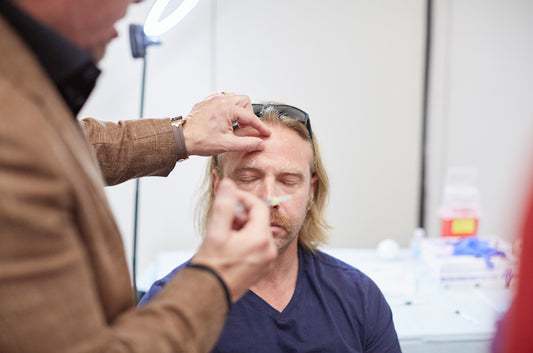Introduction: The Science Behind Skin Quality
The modern aesthetic landscape has shifted from chasing perfection to achieving healthy, radiant skin quality. Patients today seek visible luminosity and smooth texture over overfilled contours. Clinicians are responding with multimodal protocols that emphasize hydration, collagen stimulation, and regenerative repair. From biorevitalizing boosters and exosomes to energy-based devices and topical actives, today’s approach integrates science-backed therapies that optimize dermal function and restore natural radiance.
This guide presents a staged roadmap to improving skin quality: hydration → texture → tightening → pigment. Each stage builds physiologic balance and glow through complementary modalities and measurable outcomes.
Learn how these interventions are reshaping regenerative aesthetics and explore advanced training options through Empire On-Demand, a leader in medical aesthetic education.
Stage 1: Hydration – Restoring the Skin’s Baseline Vitality
Summary: Hydration is the foundation of every skin quality treatment plan. By restoring barrier function and dermal moisture, clinicians create the physiologic conditions for optimal healing, elasticity, and collagen synthesis.
The Role of Injectable Boosters and HA Fillers
Hyaluronic acid (HA) boosters deliver non-volumizing hydration throughout the dermis. Clinical studies have shown that microinjections of stabilized HA improve transepidermal water loss and elasticity while stimulating fibroblast activity (Gold et al., 2021). Unlike traditional fillers, boosters target skin quality improvement rather than contour.
Synergy with IV and Topical Support
Adjunctive use of IV nutrition therapy and topical hyaluronic acid formulations enhances systemic and surface hydration. According to the Journal of Cosmetic Dermatology, maintaining barrier lipids and HA content correlates strongly with perceptible glow and resilience.
Stage 2: Texture – Refining Surface Smoothness and Pore Uniformity
Summary: Texture refinement bridges hydration and tightening. By targeting keratinocyte turnover and microstructural remodeling, clinicians reduce roughness, pore visibility, and superficial scarring.
Energy-Assisted Remodeling
Microneedling and fractional RF technologies induce controlled dermal injury to trigger collagen and elastin remodeling. Randomized trials confirm significant gains in skin texture improvement after RF microneedling (Fabbrocini et al., 2020). The combination of mechanical and thermal stimulation promotes neocollagenesis with minimal downtime.
For clinicians expanding into device-based rejuvenation, Advancements in RF Microneedling Featuring VirtueRF provides in-depth education on the latest protocols and device safety parameters.
Biorevitalization with Exosomes
Exosome-enriched serums or injectables enhance texture recovery post-energy treatments. By delivering extracellular vesicles rich in growth factors and mRNA, exosomes promote cellular repair, angiogenesis, and collagen stimulation (Liu et al., 2023). Integration with RF or microneedling amplifies outcomes without additional inflammation.
Clinicians can master the science and technique of exosomal therapy through The Exosome Masterclass by Dr. Croley, covering both regenerative mechanisms and clinical applications.
Stage 3: Tightening – Stimulating Collagen and Elastin for Firmness
Summary: Once hydration and texture are optimized, the next stage focuses on collagen stimulation and tissue contraction using biostimulators and energy-based technologies.
Injectable Biostimulators
Agents like poly-L-lactic acid (PLLA) and calcium hydroxylapatite (CaHA) are FDA-cleared for collagen biostimulation. Studies show that they significantly improve dermal thickness and firmness over 3–6 months (Beer & Beer, 2020). These agents trigger fibroblast neocollagenesis while maintaining a natural look.
Energy-Based Lifting Modalities
Devices such as RF, ultrasound, and plasma fibroblast treatments induce thermal injury to stimulate collagen and elastin. Clinical reviews (Hantash et al., 2019) confirm that fractional plasma systems improve skin laxity through dermal contraction and remodeling while minimizing epidermal damage.
When combined strategically, injectables and devices create a synergistic lift that enhances contours and maintains elasticity over time.
Stage 4: Pigment and Radiance – Correcting Tone and Preventing Oxidative Damage
Summary: The final stage addresses uneven tone, dyschromia, and oxidative stress that dull the skin. Pigment correction enhances luminosity and completes the skin quality protocol.
Targeting Dyschromia
Laser and plasma modalities effectively reduce hyperpigmentation by targeting melanin-laden keratinocytes. Agents such as tranexamic acid, niacinamide, and vitamin C inhibit melanogenesis and oxidative stress when applied topically. Combining topical antioxidants with procedural interventions improves both clarity and radiance (NIH, 2023).
Preventive Maintenance and Barrier Restoration
Sustaining results requires consistent topical repair — barrier lipid replenishment, sunscreen adherence, and ongoing collagen stimulation. The integration of peptides, defensins, and growth factors extends the benefits of in-office treatments.
Regulatory and Safety Context
While regenerative modalities like exosomes show strong promise, they remain under regulatory scrutiny by the U.S. FDA. Clinicians must ensure all exosomal products comply with human cell and tissue product (HCT/P) regulations (21 CFR Part 1271). Only products designated for homologous use and minimal manipulation meet current compliance standards.
Energy-based devices and biostimulators are FDA-cleared for specific indications such as wrinkle reduction or tissue remodeling. Practitioners must align each treatment with approved indications and obtain informed consent regarding off-label use.
The Future of Skin Quality Protocols
The next frontier in skin quality is the convergence of biologic regeneration and precision energy delivery. Machine-learning-guided treatment plans, synthetic exosomes, and AI-assisted imaging are enhancing predictability and personalization. As evidence accumulates, clinicians who master multimodal integration will lead the evolution toward truly regenerative aesthetic outcomes.
To expand your expertise and integrate these advanced techniques, explore specialized modules and certification pathways through Empire On-Demand.
FAQs
A combination of hydration boosters, exosomes, and RF microneedling provides comprehensive improvement across all layers of the skin.
Exosomes carry growth factors and RNA signals that promote fibroblast activation and collagen regeneration.
When used with appropriate parameters and cooling, RF microneedling and plasma energy devices are safe for Fitzpatrick I–VI.
Fillers add volume; boosters hydrate and stimulate skin metabolism without changing facial contour.
Results typically last 6–12 months, depending on skin health, adjunctive treatments, and maintenance routines.
Yes. Sequential or same-session approaches enhance collagen remodeling while minimizing downtime.
Currently, no exosome products are FDA-approved for aesthetic use; clinicians should use compliant biologic sources.
Antioxidants, peptides, and barrier-restoring ceramides help sustain radiance between in-office treatments.



